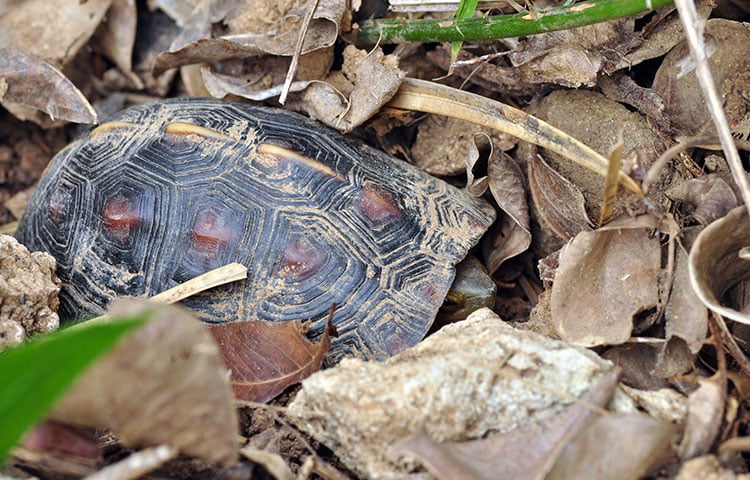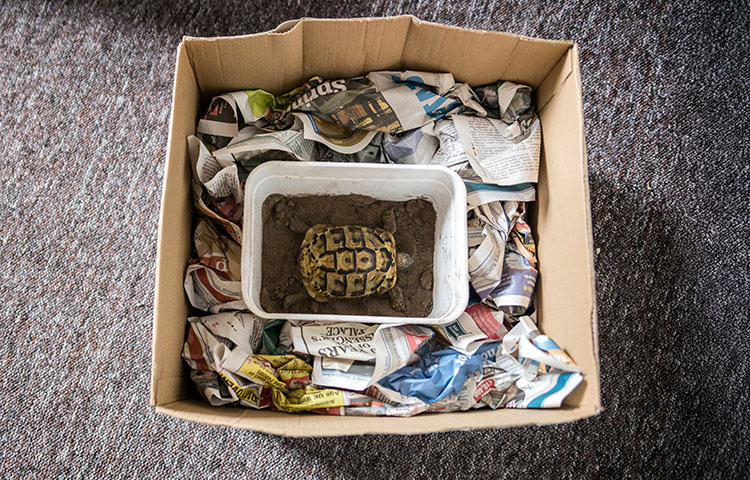5 top tips on finding the right exotic vet for you and your pet
We've come up with our 5 top tips on what to look for when searching for the right vet for your exotic pet.
Read morePublished: 26 August 2025
Hibernation is a natural and important part of many tortoises’ lives, giving them the chance to rest and conserve energy during the colder months. But in the safety of your care, their survival depends on more than instinct alone.
By preparing their environment, monitoring their health, and following the right steps, you can turn hibernation into a safe, healthy, and stress-free experience that supports their well-being year after year.
Jump to:
No, only certain tortoise species hibernate. Popular Mediterranean tortoises like Hermann’s, Spur-thighed, and Horsfield’s usually do, while tropical tortoises such as Leopard and Red-footed do not.
If you’re unsure about your tortoise’s species, speak to an exotic pet vet before attempting hibernation. You can also explore tortoise insurance options that cover vet fees for exotic species.

Before beginning hibernation, it’s essential to identify your tortoise’s species and understand whether hibernation is appropriate.
Only healthy tortoises should hibernate. In the weeks leading up to hibernation, examine your tortoise for the following:
Weigh your tortoise before hibernation. Weight loss of more than 1% during hibernation can be a sign of trouble.
It is highly recommended that you schedule a pre-hibernation vet check for your tortoise.
Fasting clears the tortoise’s digestive system, preventing undigested food from rotting in the stomach during hibernation.
While fasting, keep the tortoise’s temperature warm, above 13°C, to help complete digestion, and make sure fresh water is available until hibernation starts. Once they stop moving around and settle into their bedding, they’re likely ready to begin hibernation.
Here are two main methods used by tortoise owners:
If you’ve got a cool, quiet space like a garage or shed, the box method is a simple way to help your tortoise hibernate.
The fridge method might sound unusual, but it’s actually one of the safest ways to control the temperature.
Important: Power cuts can affect fridge temperature, so monitor closely and have a backup plan.
As temperatures drop and days shorten, your tortoise will naturally slow down, eat less, and eventually stop feeding. This is a normal part of the hibernation cycle.
If this happens too early or your tortoise isn’t in good condition, keep providing UV light and warmth until it’s the right time to hibernate.
During hibernation:
If you notice weight loss of over 1% or urination, contact a reptile vet immediately and wake your tortoise.

This depends on your tortoise’s age and size, but general guidance is:
Minimum: 6 weeks
Maximum: 12 weeks
After this time, you’ll need to slowly bring your tortoise out of hibernation.
To gently wake your tortoise:
Most tortoises will eat within a few days. If not, contact a vet. Encourage hydration with shallow baths until drinking resumes.
Encourage hydration by placing your tortoise in a shallow bath of lukewarm water, just deep enough to reach it’s chin. Drip water gently onto their shell and face to prompt drinking.
Once they’re active again, be mindful of seasonal changes, especially heat. See our guide on keeping your tortoise safe in hot weather.
If your tortoise hasn’t eaten within a week of waking or seems unwell, see a reptile vet immediately.
We offer cover for exotic pets, including vet fees and issues from hibernation (when veterinary guidance has been followed).
Get a quote today